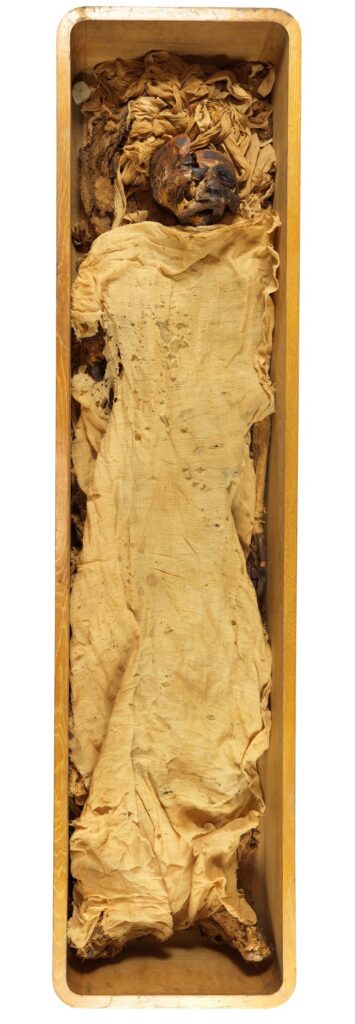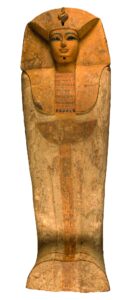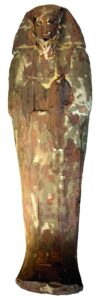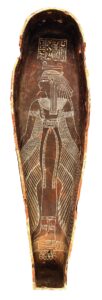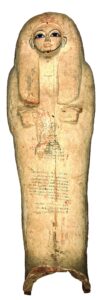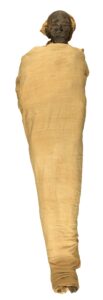Ramses VI (Nebmaatre Meriamun)
Son of Ramses III and Iset Ta-Hemdjert
New Kingdom, 20th Dynasty

One of the sons of Ramses III, Ramses VI succeeded his nephew, Ramses V, and ruled for about eight years. As a royal son, his figure was included in the “Procession of Princes” in his father’s mortuary temple at Medinet Habu; after he ascended the throne, he put his names in cartouches and added a kingly uraeus to his brow. There is evidence of internal unrest during his early years, but whether this was a family struggle for the throne or the result of attacks by foreigners or bandits is unclear. Royal power over Upper Egypt continued to decline: Although Ramses VI’s daughter Iset held the key position of God’s Wife of Amun, the family of the high priest of Amun, Ramsesnakht, clearly held increasing sway in the Theban region. The external situation was problematic as well:
during the reign of this king, Egypt lost control over its last territories in Syria-Palestine. Ramses VI was the last Egyptian king to record his name in the Sinai mines. Despite the difficulties of his time, Rameses VI left his name and mark at many sites in Egypt as well as in Nubia, which Egypt still controlled. He usurped many of the statues of his predecessors and left his cartouches in the Karnak complex and at other temples. At Deir el-Medina, he commissioned 60 workmen to construct his tomb in the Valley of the Kings (KV 9), which he took over from Ramses V. He was moved from his original burial there, possibly with a stop in another royal cache, to KV 35 early in the 21st Dynasty.
